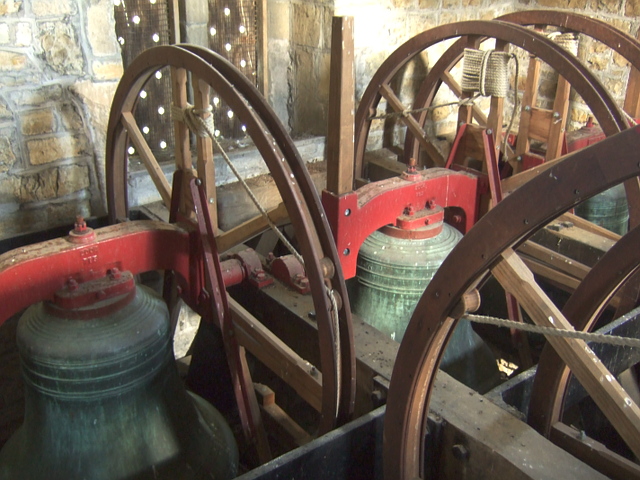Glastonbury has been known as an early centre of Christianity with legends of Joseph of Arimathea and the “Wattle church” in Glastonbury Abbey. Glastonbury has documentary evidence from St Bridget of Christian Chapels written in 480 AD. It has also come to light with recent carbon dating that the Chapel at Beckery on the edge of Glastonbury, only two miles from Meare, was in use in the 5th century. King Alfred baptised Guthram at Aller and celebrated at Wedmore in 878 AD. And there has been a 10th or 11th century Saxon cross discovered on top of the Tor now on display at the Museum of Somerset in Taunton. So plenty of evidence all around of early churches through the Saxon era.
During Saxon times it is known that there was a hermitage at Meare where a hermit by the name of Beon or Beonna lived. When he died he was buried in Meare in a shrine which bore his name. Four to five hundred years later in 1091, his bones were relocated to Glastonbury Abbey in a great ceremony as part of their relic collection. The bones were mistakenly claimed to be that of the more important St Benignus the Irish Saint. The current location of the Church in Meare is likely to have been on top of the old shrine. A building dating to 1191 AD was said to have existed in Meare.
The building in its current form was consecrated in 1323 AD and also significantly restored and improved in 1490. So most of what can be seen falls into these two dates. The tower and chancel are the earlier date and the rest being the nave, clerestory and aisles are the latter.
Before entering the church, the door has floral iron work which is from the original 14th century and noted to be some of the finest in the whole country. They were originally on the inner door but they have been moved to the external door. The external wood of the door has been recently restored (see above).

Inside the church, the main nave has the latter 15th century ceiling but where it changes to the chancel, the roof has kept its older 14th century style. The chancel roof is a fine example of decorative wind braces with scolloped arches. It is one of the best of the early kind in Somerset.
 The pulpit is part of the original 14th century building too and it is quite unusual for being early and made in stone. Mostparish pulpits in Somerset are made of wood and a few of them are still covered in their gaudy decorative paint.
The pulpit is part of the original 14th century building too and it is quite unusual for being early and made in stone. Mostparish pulpits in Somerset are made of wood and a few of them are still covered in their gaudy decorative paint.
Often, the pulpit and the walls would have been painted in bright colours but fashions changed and between the 16th and 19th century the style was to have them plain. Some remnants of this original coloured medieval paint can still be seen on the sculpted corbels of angels.

Inside the church on the right hand side is an old alms box. Tudor laws stated that the church had to have an organized method of collection for the poor of the parish. The Tudor box is mounted on a medieval pedestal.

The church has a peel of six bells which ring regularly. They were cast by Bilbie of Chewstoke in 1707 and 1731. There is some suggestion that they were re-cast from the bells from Glastonbury Abbey. They were removed for refurbishment in 2004, checked for tuning to E flat and replaced. The largest tenor bell is 1526 lb which is about 700 Kg.

This wooden figure (pictured right) is on loan to the Museum of Somerset from Glastonbury Antiquarian Society. It was originally from Meare Church but its purpose or original location within the church is unclear.
 In the church yard sits the village cross. It is a grade II listed building in itself and was once located in the main road but moved to the church yard in the early part of the 19th century.
In the church yard sits the village cross. It is a grade II listed building in itself and was once located in the main road but moved to the church yard in the early part of the 19th century.
(content and images: S.Edwards)

